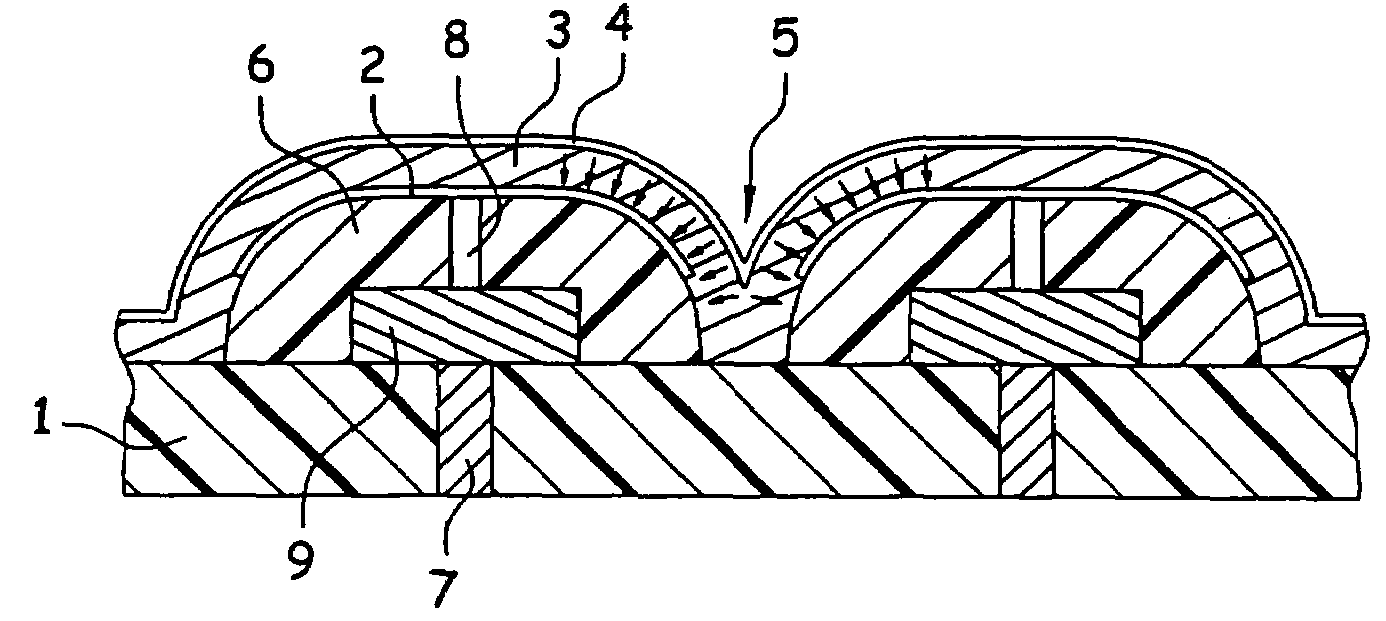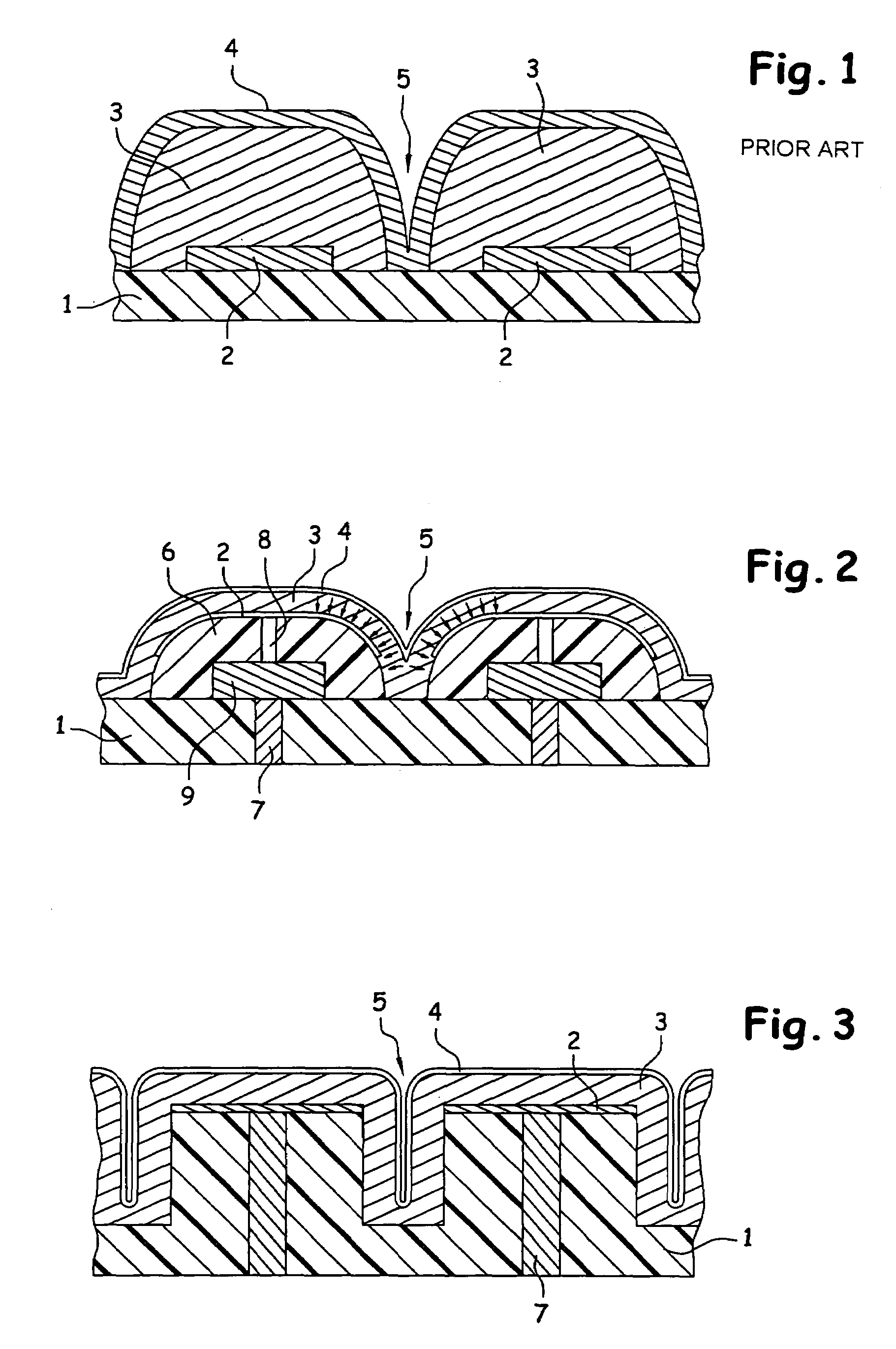Photoelectric detection device and method for its production
- Summary
- Abstract
- Description
- Claims
- Application Information
AI Technical Summary
Benefits of technology
Problems solved by technology
Method used
Image
Examples
Embodiment Construction
[0055]The photoelectric detector according to the invention has therefore been represented in relation to FIG. 2. In order to simplify the schematic representation, the sense circuit has not been represented in this figure. Furthermore, the various numerical references corresponding to elements or components which are identical to those of the prior art have been retained.
[0056]According to the invention, for each pixel, the photoelectric detector firstly includes a metallization layer (9) with a relatively large thickness, typically 1 μm, which is connected to the sense circuit by means of a conductor or “plug” (7).
[0057]This metallization layer (9) is then enclosed in an insulator deposit (6), such as a silicon oxide, a silicon nitride, a silicon oxynitride or any combination thereof. This insulator deposit (6) therefore comes into contact with the silicon of the insulating support (1), and constitutes a convexly shaped zone as can be seen in FIG. 2. This deposit (6) may be produc...
PUM
 Login to View More
Login to View More Abstract
Description
Claims
Application Information
 Login to View More
Login to View More - R&D
- Intellectual Property
- Life Sciences
- Materials
- Tech Scout
- Unparalleled Data Quality
- Higher Quality Content
- 60% Fewer Hallucinations
Browse by: Latest US Patents, China's latest patents, Technical Efficacy Thesaurus, Application Domain, Technology Topic, Popular Technical Reports.
© 2025 PatSnap. All rights reserved.Legal|Privacy policy|Modern Slavery Act Transparency Statement|Sitemap|About US| Contact US: help@patsnap.com


